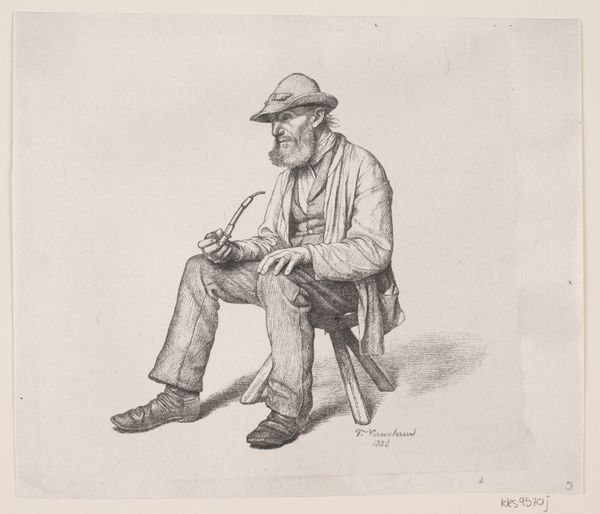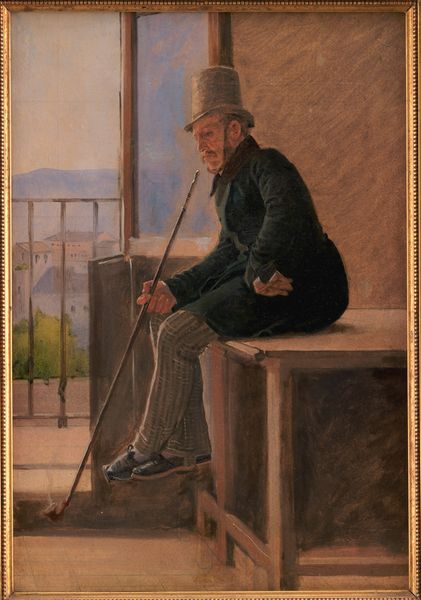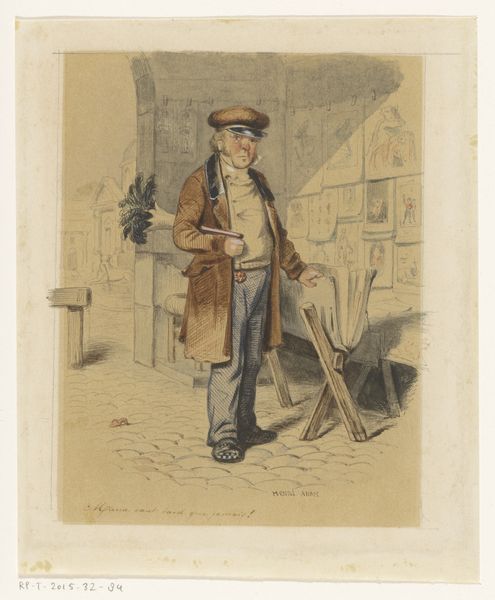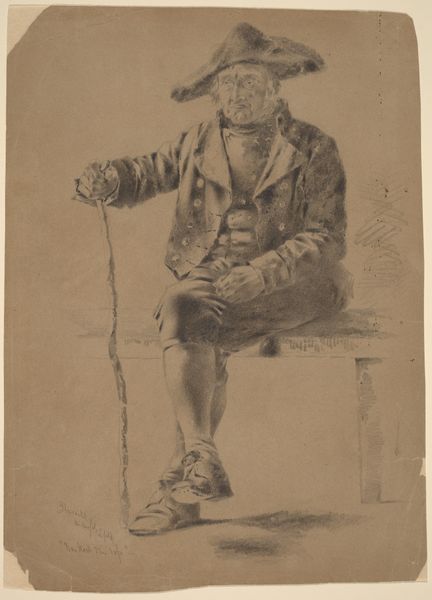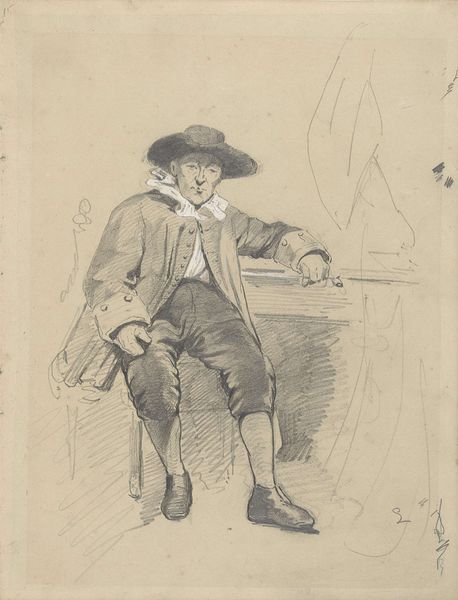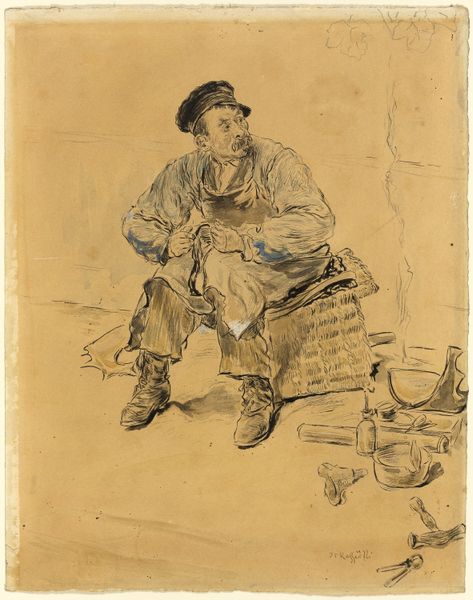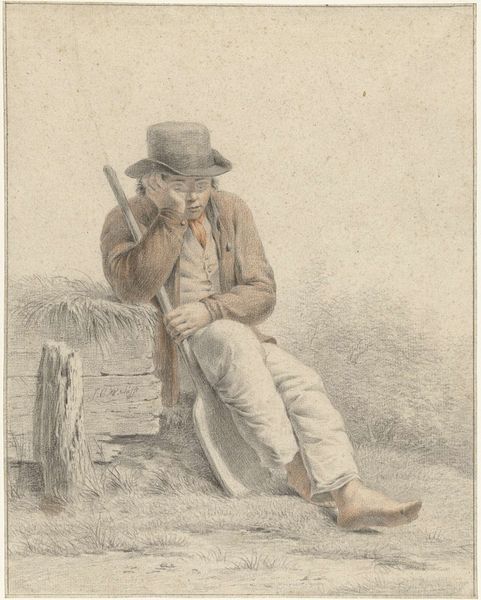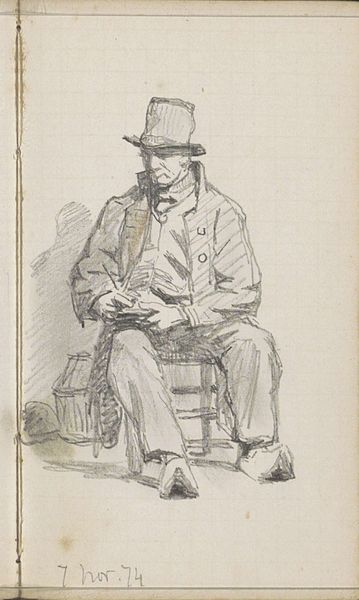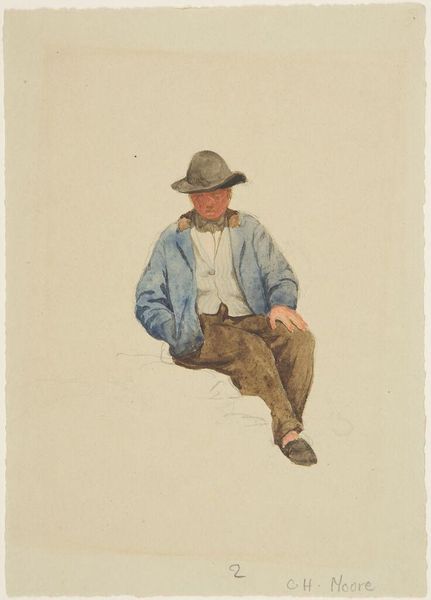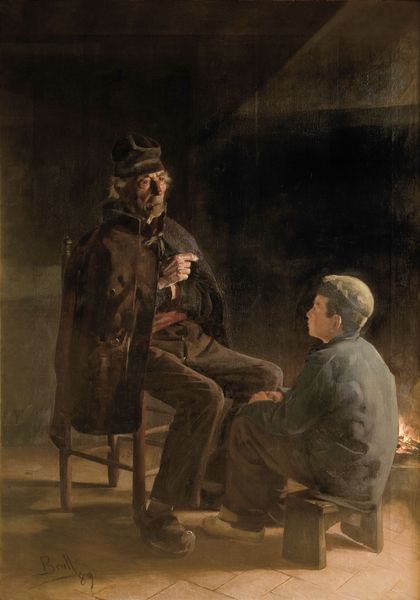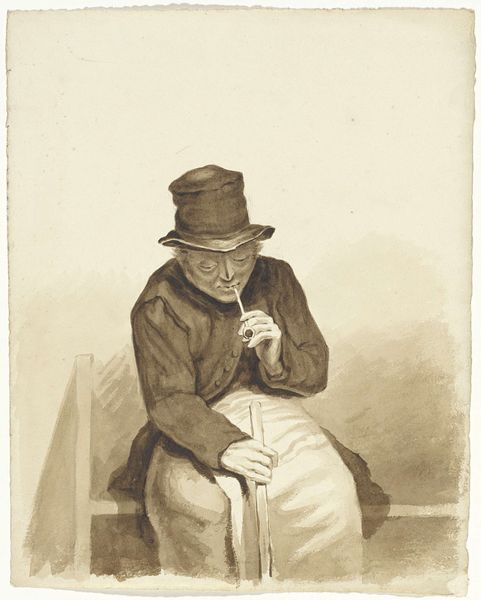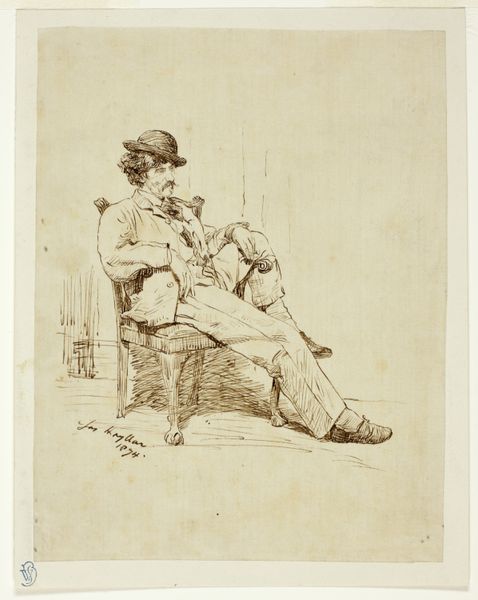
paper, watercolor
#
portrait
#
paper
#
watercolor
#
romanticism
#
portrait drawing
#
genre-painting
#
portrait art
Dimensions: 26.7 cm (height) x 21 cm (width) (netto)
Curator: This watercolor on paper is titled "Martinus Rørbye," a portrait by Constantin Hansen, created in 1837. It's currently held here at the SMK. What are your initial thoughts? Editor: There's a subdued intimacy about this work, isn't there? The muted tones, the casual posture... he seems utterly absorbed. Is it the cup, the setting, or is it the man that commands our attention? Curator: I'd say Hansen masterfully captured a sense of bourgeois comfort and contemplation. Consider the materiality here: watercolor on paper allows for a delicate rendering of light and shadow. It almost mimics the casual setting itself. Editor: Absolutely. And it gives a particular glimpse into the role of artists and their circles at the time. How this artwork might've been viewed or circulated back in the day among the rising middle class offers another insight. Did Hansen intend to just show an everyday scene, or also some of the underlying societal changes of the time? Curator: Perhaps both! It serves as a portrait and hints towards genre painting. We shouldn’t forget Hansen was a significant figure of the Danish Golden Age. His choices of medium and subject reflected broader Romantic aesthetics, particularly celebrating a quieter, more introspective vision of human experience. Editor: Exactly. He's staged in a space with the wooden walls which makes the viewer observe his everyday life as one of their own. Curator: Think of the impact a piece like this has in a national collection. It embodies notions of Danish identity, historical context and belonging...it’s about how artistic heritage helps to build, preserve and also sometimes contest cultural values. Editor: So, it’s much more than just a man and his tea. It speaks volumes of societal values, the development of artistic mediums and historical circumstances. Curator: Precisely. Examining all that, it allows us to see it as a unique cultural artifact. Editor: Thank you! That certainly made me see more than what immediately meets the eye.
Comments
No comments
Be the first to comment and join the conversation on the ultimate creative platform.
